A short but rewarding visit to the Khichan Bird Sanctuary || How the local population of a place has made this town a safe haven for the Demoiselle cranes
On our way from Bikaner to Jaisalmer, Khichan Bird Sanctuary was our second scheduled stop after Bap Village. And we were really excited about it. Both of us love watching and Photographing birds and we never miss a chance to visit a bird sanctuary. So this would be the ideal spot for us to take a break and stretch our legs.
When there are migratory birds around, you usually see them from a distance. And in this case too, we could see some large birds flying about in V formation. From a distance, we could not identify them, but we were eager to get there.
When we reached Khichan village, even though it was later in the morning than Bhap, the village was sleepier than Bhap. We reached the fenced area around a small waterbody that was the bird sanctuary, according to a board, and hoped to click some quick photos of the birds and then be off. However, when we reached there, we could only see one red-wattled lapwing and one black-winged stilt to be seen.
And a couple of dogs were headed straight towards us. And at a brisk pace. We stood still as they approached. Even though I like dogs, Vijay is better at handling strays. So I was really nervous. The dogs were really close now and it was too late to do anything. They reached us and then passed without even throwing us a glance. To be honest, it was a bit of an anticlimax and we felt a little rejected as well.
We thought that the birds aren't here yet and may be we are too early in the season. So we started clicking what we could of the water reservoir. In the meanwhile, a couple of local kids skipped up to us and the younger one of the two started talking immediately. "Yeh Mangolia se aati hain. Agar inko bajra daloge to yeh ekdum paas aa jaati hain." He kept repeating these and a few other sentences on a loop.
We thought that may be he was talking about the pigeons or the sparrows but were not sure why he kept saying that they come from Mangolia. This was too specific to be wrong. So we asked him what he was talking about.
He pointed to a sandy hill and said "woh chidiyaan". We were confused and so we double-confirmed "wahan chidiyan hain". He said "haan". And we started walking towards the hill, with the children on our heels.
Before we could reach the hill we heard a weird squawking sound. And then a flock of large birds emerged from behind the hill, flying in V formation. It was the most amazing moment. Take a couple of minutes to be in this moment with us...
The voice inside me told me that these were the Demoiselle Cranes. The rare and pretty birds that indeed fly to India from Mangolia were on my "must see" list and I did not know that I would get to check these off during this trip.
Once we were over the hill (literally, not figuratively) we came across the sight that we had hoped we would see. Hundreds of Demoiselle cranes were pecking the grains that locals had spread for them. And they were a sight to behold.
Demoiselle Cranes (grus virgo) are a species of crane that breed in central Eurosiberia, ranging from Black Sea and Mangolia to North Eastern China, plus a small breeding population in Turkey. The birds fly south to Africa and Indian subcontinent to spend the winter months.
So practically they split their time half and half in both the areas. Then why do we say that these are siberian birds that visit India. They can also be Indian birds that visit Siberia to breed. Can't they?
At 76 cm tall, Demoiselles are the smallest birds in the crane family. They are also tall and slender and delicate looking birds that often symbolize beauty and fragility. They are predominantly gray in color with black neck and head and a white stripe running from their eyes all the way to the back of their head.
The birds fly in a V formation, like most other birds that are used to migrating over large distances. The V formation is headed by a female with two sub-adults flying on either side of her and the males make up the rear of the formation.
Demoiselle cranes take a very hard migratory path each way. They fly at a really high altitude at about 16,000 - 26,000 feet. They cross the Himalayas twice every year and many die because of hunger, starvations, tiredness, or fall prey to predators like the Golden Eagle.
The birds are known as koonj or kurjan in North Indian languages. In Sanskrit, the birds are known as kranch. In fact it is the demoiselle crane that is credited with being the source of inspiration for the first metered verse.
As per Indian mythology, when Valmiki witnessed the lament of a female demoiselle crane whose mate had been killed by a hunter, he cursed the hunter in a verse that spontaneously came to him.
There is also a mention of kraunch in Mahabharat. On the second day of the Kurukshetra war, it is written in some texts that both the sides arranged their troops in kraunch formation. It was thought to be an effective troop formation.
The demoiselle crane was so named by Queen Marie Antoinette for its delicate and maiden-like appearance. Demoiselle crane's local names in Urdu (Koonj) and in Pashto (Zaanray) both mean a beautiful person. And the crane is marked Least Concern in the IUCN Red List of Threatened Species.
The story of why Demoiselle cranes started landing in Khichan is also very interesting. In the 1970s, Ratanlal Maloo, a native of Khichan and a devout Jain, started spreading the grains on the ground for birds. A number of pigeons, sparrows and squirrels started coming to the place; peacocks also occasionally visited the place to feed on the grains.
Then in September that year, a few demoiselle cranes also joined the other birds. During September-February, around 100 cranes came to the feeding place. And then in the next winter, around 150 cranes visited the place. As the cranes grew in numbers, the local dogs started hunting them. So, Ratan Lal asked the village panchayat to allot him some land on the outskirts of the village. Villagers built a chugga ghar ("bird feeding home"), with a granary and a fence. Several Jain traders supported the initiative by supplying grains.
What started initially as a few dozen visiting birds has now become a major migration with thousands of cranes visiting the village year after year, during the period of August to March, and the number is reported to be increasing. This is attributed to the feeding done by the village community, twice a day during the birds entire stay in the town.
After watching the cranes for some time and clicking pictures, we bought the two kids some packets of chips from a local shop and headed onward toward Jaisalmer. Overall this had been a really good stop.


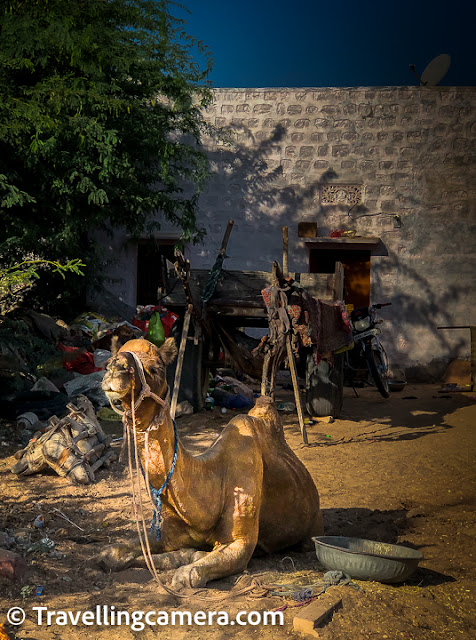
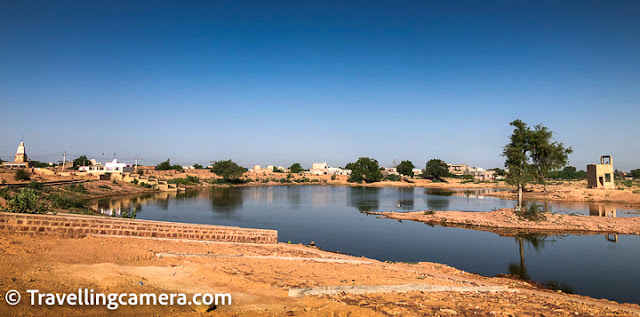
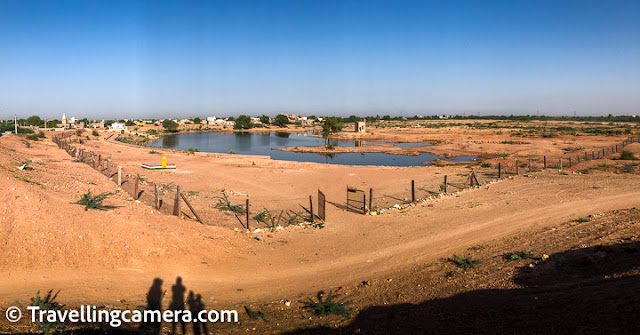


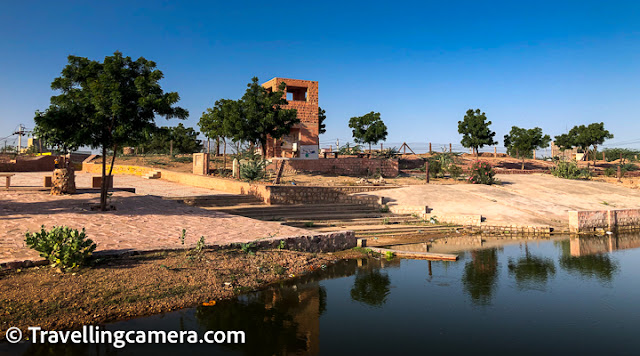
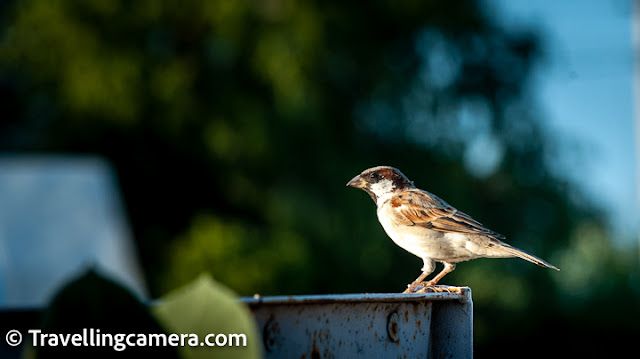
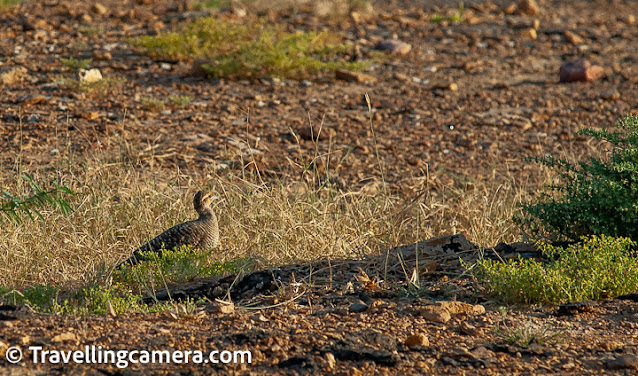
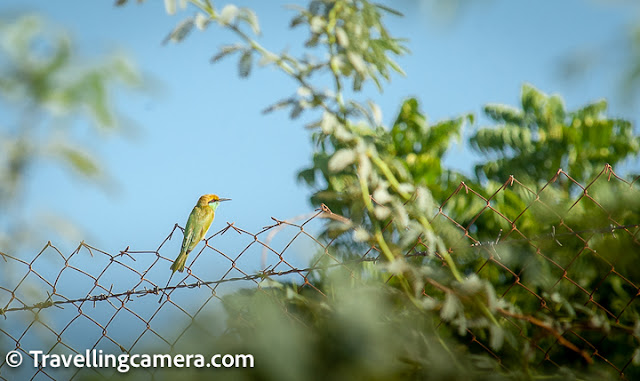










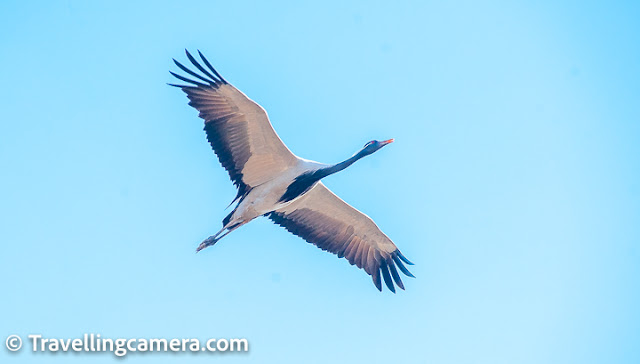


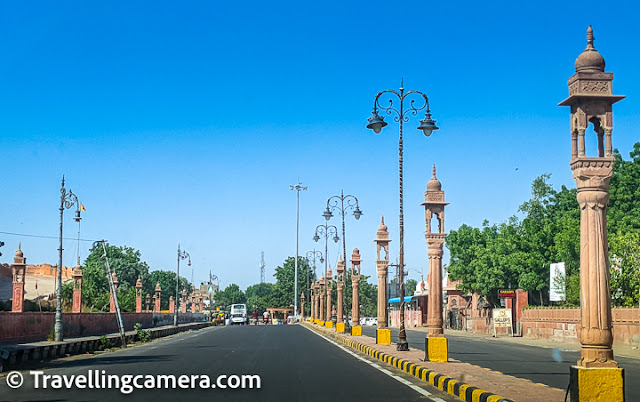




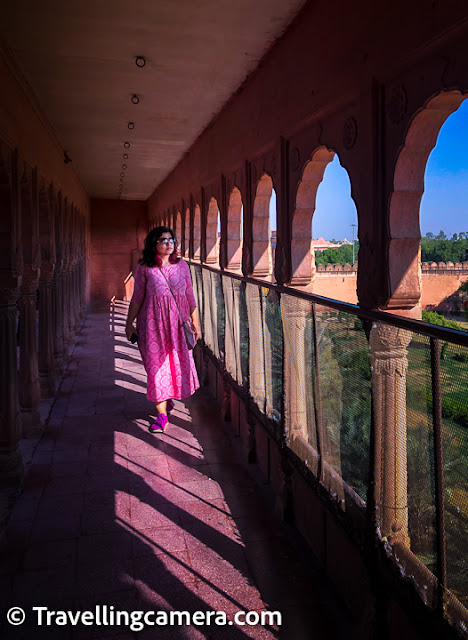

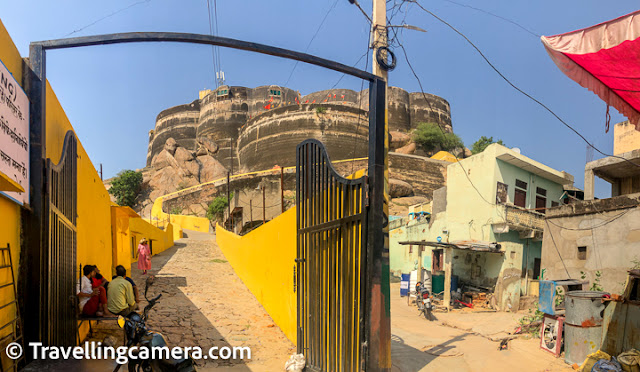

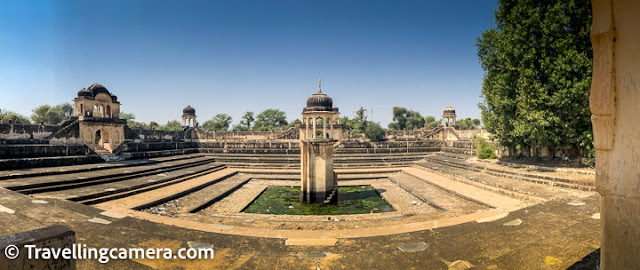



.jpg)
Comments